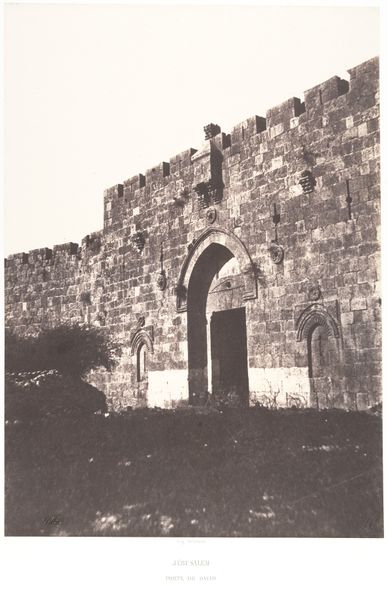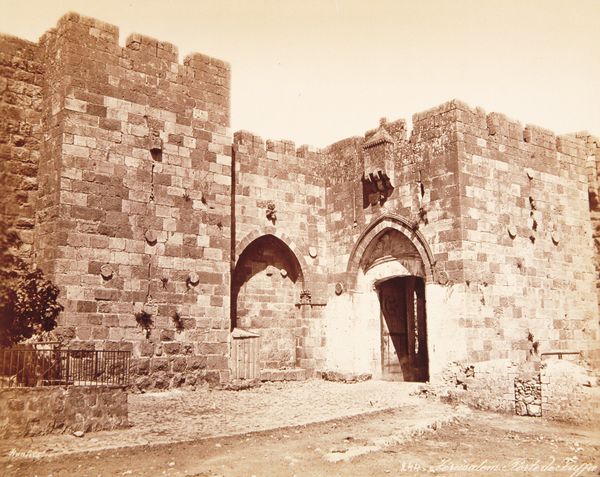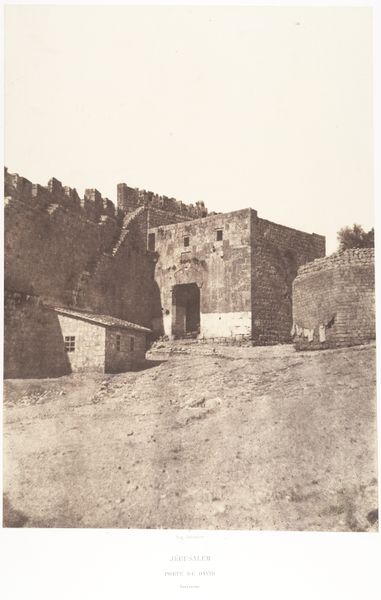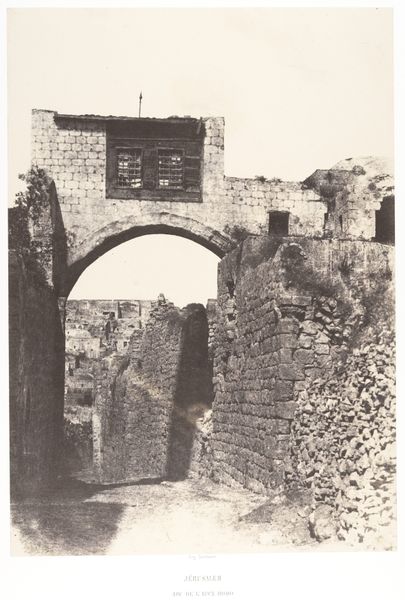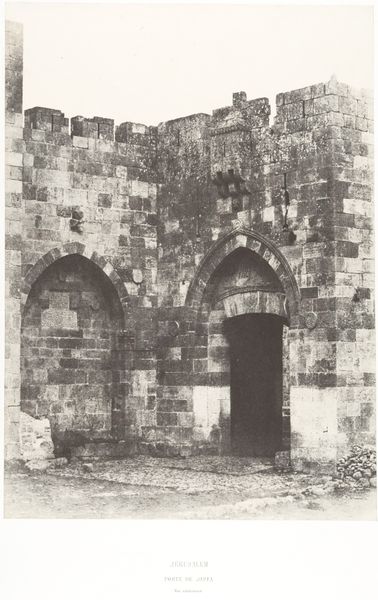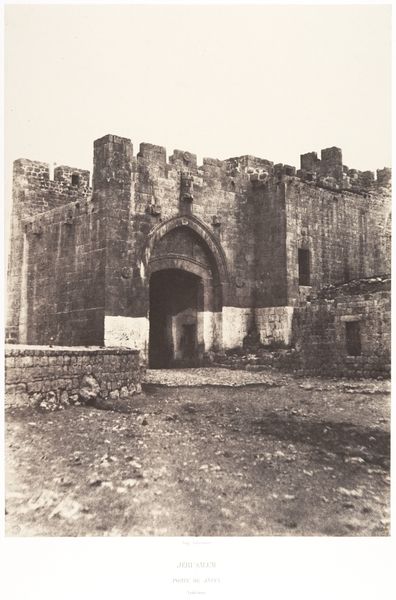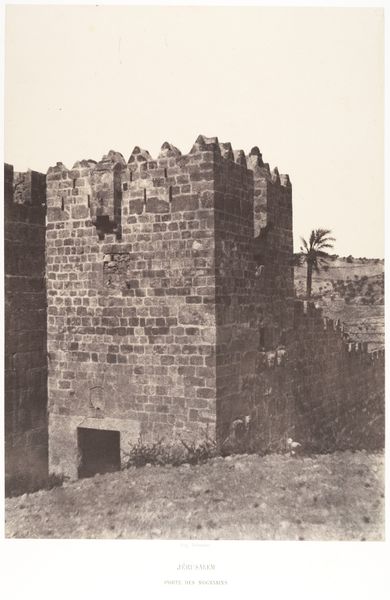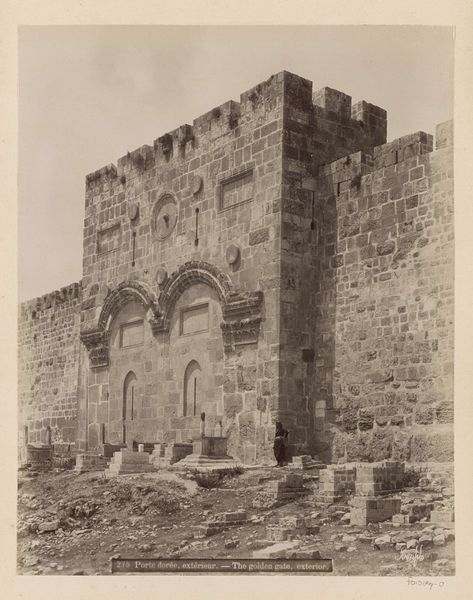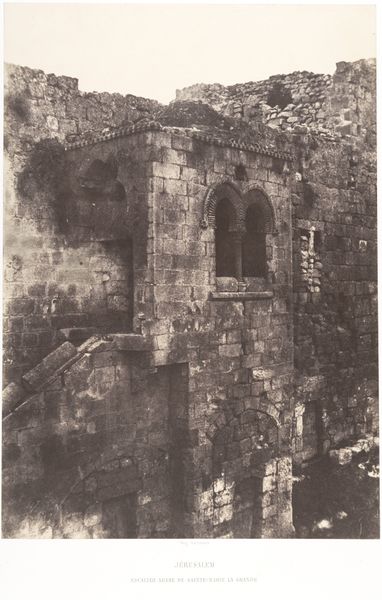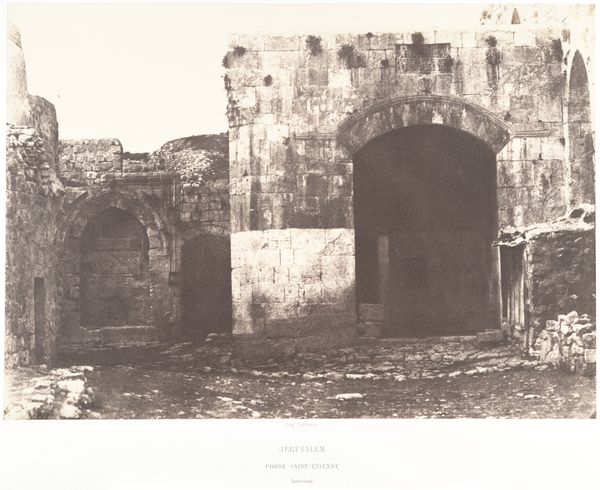
Jérusalem, Porte de Jaffa, Vue générale 1854 - 1859
0:00
0:00
print, daguerreotype, photography, architecture
# print
#
daguerreotype
#
photography
#
ancient-mediterranean
#
arch
#
monochrome photography
#
nature heavy
#
outdoor activity
#
cityscape
#
islamic-art
#
architecture
Copyright: Public Domain
Curator: Standing before us is Auguste Salzmann’s daguerreotype, “Jerusalem, Porte de Jaffa, Vue générale,” taken sometime between 1854 and 1859. Editor: The immediate impression is solidity. The gate is a powerful block of stone, enduring, maybe a bit…imposing? There’s an undeniable stillness, too. Curator: It’s remarkable to see Jerusalem captured so early in photography’s history. Salzmann was on a mission to document biblical sites, armed with his camera like an archaeologist’s trowel. He was, after all, commissioned to bolster the archaeological studies of Félicien de Saulcy, meant to 'prove' the biblical history through scientific evidence. Editor: So, there’s already an agenda embedded in the work? I guess this scientific eye wanted to excavate 'truth', which sounds like quite a heavy burden for a photograph. Curator: Exactly. Salzmann’s photographs were exhibited to garner public and financial support for archaeological excavations. The Porte de Jaffa becomes more than just a gate; it becomes evidence. Consider the prevailing colonial attitudes; depicting the near East as a land that is timeless, but also in need of scientific and 'rational' order that Europeans could provide. Editor: Right, I am reminded of that claim of scientific 'objectivity'. It is kind of funny actually – the daguerreotype, a brand new technology, being employed to legitimize this really ancient narrative... and very selective views! Curator: Precisely! The choice of the Jaffa Gate itself is quite telling, as it's one of the main entrances to the city, linking Jerusalem to the outside world, to trade, to power. The emptiness in front adds this slightly mournful dimension, evoking feelings of solemn reflection of days gone by. Editor: Yet this photograph still speaks, it forces us to examine not only the structure of the Jaffa Gate, but the structures of power, perception and faith intertwined with its image. It becomes a lens through which we view the complex history of Jerusalem and the politics inherent in its representation. Curator: Absolutely. It invites a dialogue that is not merely about architecture, but about our ever evolving ideas surrounding place, time, faith and objective truth.
Comments
No comments
Be the first to comment and join the conversation on the ultimate creative platform.
